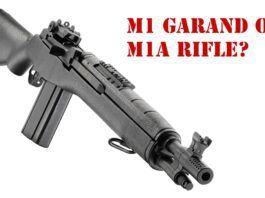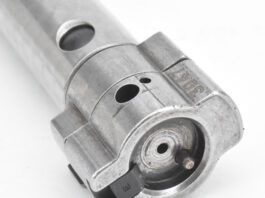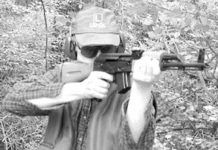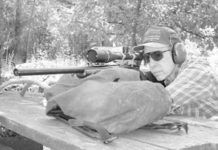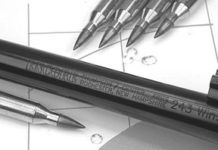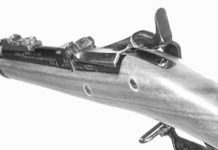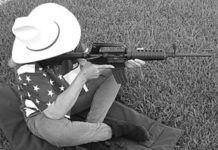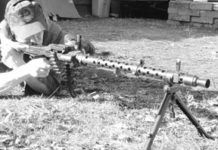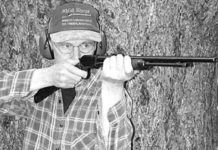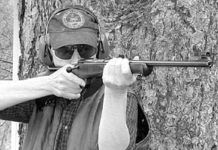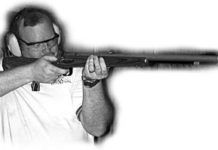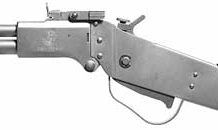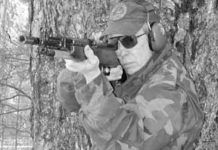We Try a Trio of 7.62mm Russian Rifles: Arsenal USA Wins The Day
Despite its being the most prolific rifle in history, Mikhail Kalashnikov's AK-47 is still being manufactured in a vast variety of offerings at locations all over the world. One of those locations is Houston, Texas, where the Arsenal USA Co. assembles AKs using parts from Hungary and some made in Houston. We got one of that company's rifles for a recent test, pitting the hybrid U.S./foreign product against an imported wire-stocked Romanian-made rifle from Southern Ohio Gun. To complete the group of 7.62mm Russian rifles, we got a VZ 2000 from Ohio Ordnance Works. The VZ-2000 can be mistaken for an AK-47 look-alike, but is actually a close semiauto copy of the Czech Model 58.
All of these semiautomatic rifles fired the .30 Russian Short, which the 7.62x39 is sometimes called. We've recently noticed bargain-priced surplus rifles in odd calibers, but two boxes of ammunition can cost as much as the rifle. Not so the .30 Russian Short. We found 7.62x39 ammo to be plentiful and generally not very expensive. If you want to have fun with your AK, it's nice to know the fodder won't break the bank.
Quest for a Great .22-250 Heavy-Barrel Varmint Rifle: We Like Howa
The .22-250 cartridge, which got its name from wildcatting the .250-3000 Savage (introduced in 1915) to accept .22-caliber bullets, has been around a long time. Early experimenters like Gebby put the finishing touches on it back in about 1937. In 1965 Remington adopted the cartridge as a standard offering, and it has been successful ever since. Although some think the round is about ideal for serious varminting, especially at longer ranges and in the West, the Swift will sling 55-grain bullets about 200 fps faster. Yet not many manufacturers chamber the Swift compared with the vast numbers who chamber the .22-250 Remington.
A common trick among serious users of this cartridge is to "improve" it by blowing out the case to eliminate much of the taper. This simple alteration results in performance essentially equal to that of the Swift.
Although many makers offer rifles, we selected just two this time for a serious look. In upcoming issues we'll look at several others. The two test rifles were both outstanding "lookers," though with vastly different looks. The lines of the Sako Model 75 Varmint (about $1,200) were strictly classic. The Sako had a Monte-Carlo stock, dark and figured walnut, and a wide forend that all spoke "business." The laminated thumbhole stock on the Howa Model 1500 Thumbhole Varminter Supreme (MSRP $692) screamed "modern," though its metal work was pretty classic. Would they shoot? Let's find out.
.243 Winchester Hunters: We Test T/C, Savage, and M.O.A.
The .243 Winchester is a versatile centerfire cartridge. When it's loaded light in rifles, it's a comfortable varminting round. With bigger bullets, it's plenty good for taking antelope and deer, and its modest recoil make it a favorite among people who don't like too much action at the butt end of the gun.
But we wondered how we would like the .243's manners when we fired it in handguns such as the break-action Thompson/Center Encore, $588; the falling block-style M.O.A., $919; and the $562 bolt-operated Savage Striker 516SAK, which also sports a two-round magazine and a muzzle brake.
Trapdoor Springfields: Whats Your Best Historical Purchase?
Pedersoli's rifles are close matches to an original. But which $1000 rifle would we choose? Ultimately, it was a coin flip.
Lightweight AR-15 Carbines: We Test Guns from Bushmaster, DPMS
Need a handy, dependable rifle for self-defense? Want a lightweight gun that won't stretch your arms? In this test, you can pick either gun and come out with a winner.
Semiauto Battlefield Guns, Part II: Another BAR and an 8mm MG-34
Our ongoing evaluation of semiautomatic versions of famous machine guns continues with this comparison of two bipod-mounted guns, the stolid BAR and the beautiful German MG-34.
Pump-Rifle Probe: Are These Rimfire Slide Actions Any Good?
Pump-action .22 rifles have been with us for well over a century. Many millions of kids cut their shooting teeth with a pump rifle, a supply of tin cans, and Dad's careful tutoring. Shooting galleries throughout the U.S., and probably the world, used the Gallery model of the Winchester, so many people gained familiarity with the rifle even if they never owned one. Pump-rifle designs were generally simple and durable, and the Winchesters probably set the standard for other makers to follow.
The common talk among shooters was that you could load the .22 pump rifle in the morning and shoot it all day, or something like that. Whether or not the Winchester Model 62 was the first rifle that spawned that phrase (it was probably the Winchester Model 1890), the 62 would fill the bill with its full-length tubular magazine that accepted 20 Short, 16 Long, or 14 Long Rifle cartridges. Per the 10th Edition of Modern Gun Values, the Winchester Model 62 rifle was introduced in 1932 and discontinued in 1959. That tome gives an approximate value for the Model 62 Winchester in excellent condition at about $600, but that price has probably gone up since our 1996 edition was printed. We were lucky enough to obtain the loan of a Winchester 62A in excellent condition, which gave us an excellent basis for comparison with two new pump .22s we also acquired, a close copy of the Model 62 Winchester by Taurus, called the M62 Carbine ($279) with 16.5-inch barrel, and another by Henry Arms, called simply the Pump Action .22 ($300), with an extended forend and side ejection.
We put these to our functional and accuracy tests, beginning with the Winchester to see what a good, classic pump gun would feel like. First, we shot them offhand to get a feel for what they offered. Without spoiling the story, we liked what we found from this informal shooting. All three balanced well, and all three had acceptable triggers. We were shooting at a stump at 75 yards, so didn't try for accuracy until later, off the bench. But all fed and functioned well right off the bat. In fact, there were no failures to feed or function with .22 LR ammo in any of the three rifles throughout our shooting. Here are our formal findings.
Fine 22 Rifles: We like Coopers Custom Classic, Anschutz 1710
Now is a great time to break out your .22 LR rifle and get in some practice for big game season, still a few months off in most places. What's that, you say? You don't have a good .22? Well, maybe we can help you choose one. In the past few days we checked out three magnificent .22 bolt-action rifles, and we're here to tell you what's good and what's not so good about them.
This go-around we grabbed one of the more costly .22 rimfire bolt rifles made today, the Cooper Custom Classic ($1,895). We also secured the less expensive but still somewhat pricey Anschutz Model 1710 D KL ($1,295), and followed that up with the lovely and inexpensive CZ ZOM 451($250). Because the first two are commonly mentioned as being marvelously accurate rifles, we thought it would be a good idea to find out just how accurate they were. Therefore, we tried the trio with two types of some of the finest match ammunition available. We also threw in some high-speed ammo. We mounted the best scopes we could fit, and shot the rifles from a solid machine rest, trying for one-hole groups. If a fine rifle can shoot match-grade .22 ammunition well, it will do okay with normal ammunition, though the groups will generally be larger. In other words, if you're spending nearly two grand for a .22 LR, we think you'll want to know just how small of a hole it's capable of, and that was our primary interest here. We could bore you with tales of near-inch groups with Stingers or Remington high-speed, but if you're like us, you'll want to know the real skinny on what these costly bangers can do with some of the best ammo, and how well a far-less-costly rifle would do against them.
The three rifles were all bolt actions, and all had fancy quarter-sawn walnut stocks. The overall weights were significantly different, yet all had fine balance. All three were attractive rifles with varying degrees of premium extras. During our tests, we got some pleasant surprises. Come along and see what we found.
In-Line Black-Powder Rifles: Knights DISC is our pick
Several months ago we reviewed some flintlock rifles on these pages. Many shooters use the flinters much like time machines, to experience hunting and shooting as it was for this country's earliest explorers and founders. But not every muzzle-loading fan wants to travel down the old road, so to speak, when there are modern alternatives. In this report we test four state-of-the-art in-line muzzle-loading rifles. Ignition is generally provided by a modern shotshell primer held in place by short-throw bolts, and fired by strikers within the bolts. There are no external hammers here. The in-line name comes from the position of the primer, located directly behind the powder charge and in line with the bore, instead of resting on a side-mounted chamber like on a traditional hammer-fired black-powder rifle.
We obtained four models. They were the Knight DISC Extreme DE706B ($704), Winchester X-150 Magnum ($345), CVA Firebolt 209 UltraMag ($300), and the Remington 700 MLS Magnum ($569). All were .50-caliber rifles with twist rates designed for sabot loading of elongated, sub-caliber bullets. In keeping with the most modern concepts of black-powder technology, we tested our batch of rifles with combinations of 50- and 30-grain Pyrodex pellets, rather than messing with loose powder and any sort of measure. We used the iron sights as provided by the makers, and shot at 100 yards from a bench rest. We observed no ignition delay in any of these shotshell primer-fired rifles. Felt recoil was similar in all guns. We judged recoil to be stout with the full 150-grain charge. It felt similar to that of a .30-06. It was much more comfortable with 130-grain pellet charges, which we thought gave less recoil than the average .308. Recoil with 100-grain charges was comparable to that of a .243.
The flash and sparks from the ignition of the primer were substantial from all the rifles except the Knight. Bystanders, especially those standing to the right of someone shooting one of these rifles, should wear shooting glasses and hearing protection. The sound levels of these smokepoles were comparable to that of centerfire rifles, but the sparks were a different story altogether. The Knight's DISC system contained the primer, and thus limited the flash and sparks to about a quarter of that experienced with the other rifles. Here are other findings on a rifle-by-rifle basis.
Anschtz, Ruger, Marlin & Savage: .17 HMRs Meet Head-to-Head
When the .17 Hornady Magnum Rimfire cartridge was announced early last year, few people in the industry anticipated that it would be as big a smash hit as it came to be. Ammunition has been difficult to find on dealers' shelves at times, and many .17 rimfire shooters took to buying supplies whenever they found it in stock.
The first guns chambered for the round— Rugers and Marlins — started showing up on dealers shelves in late spring or early summer last year, and by the end of the year, virtually every major maker of rimfire rifles was making guns for the new cartridge. Everything seems to be selling well, and supply has not really caught up with demand, yet.
We did our first preliminary testing of the new round with a Ruger 77/17 in February 2002, and have been shooting the cartridge more-or-less consistently ever since in a variety of rifles. We've burned up more than 1,500 rounds of .17 HMR ammo, most of it in the field on varmints. We can unequivocally say it was the most accurate and has the best ballistics of any hunting rimfire round on the market today. We have shot or seen shot a variety of game with the new round, from ground squirrels to coyotes to one wild boar. The tiny 17-grain Hornady V-Max bullet at 2,550 fps, while not as devastating on small varmints as some of the 30- to 34-grain loads in the .22 Winchester Magnum, was extremely accurate and does a splendid job on small game out to an honest 200-plus yards.
Survival Rifles: What to Choose When the Stakes are Highest
In 1959 a revolutionary rifle made its appearance. Designed by Armalite for the U.S. Air Force by Gene Stoner, the little rifle was designated the AR-7. It was chambered in .22 LR (high-velocity rounds only), and was unique in that it came apart without tools. Even better, all the parts could be stored within its hollow butt stock, and the rifle would float in either stowed or assembled form. When the rifle was made available to the general public, outdoorsmen of all sorts grabbed ‘em. At about the same time, the AR-7 made an appearance in the early James Bond film, "From Russia With Love," and its place in history was thus secured.
More SKS Rifles! Albanian and Yugoslavian Imports Slug It Out
The SKS is a homely brute, and many of its simple mechanisms are largely outdated by today's weapons' standards. But it works. It, like so many rifles based on the tapered 7.62 x 39 round, catches the cartridges that its two-piece bolt strips out of that fixed, ten-shot magazine with great ease. It fires them reliably and slings out the empties like an outraged matron encountering last week's garbage. The accuracy isn't generally good enough to be called that, unless you've got a lucky specimen on your hands. On average, they seem to shoot M1-Carbine-size groups. They'll put most of their shots into a four- or five-inch circle at a hundred yards, and that's plenty good enough for their intended job. But you'd never write home to mama about how attractive a rifle an SKS is.


























